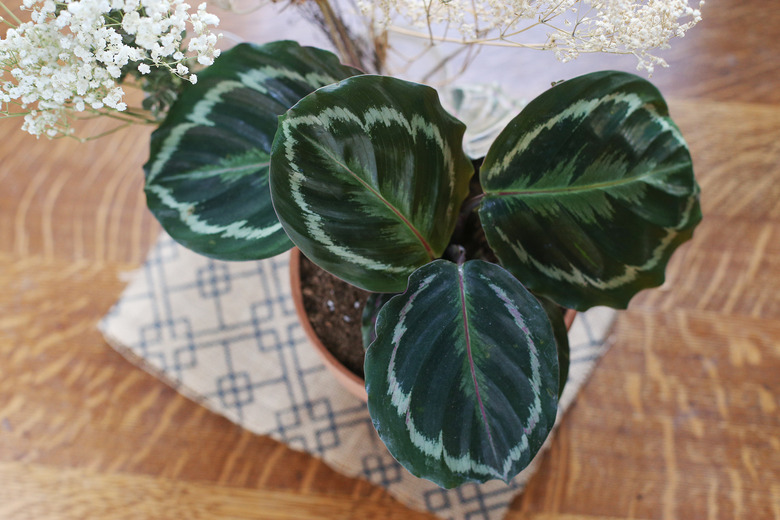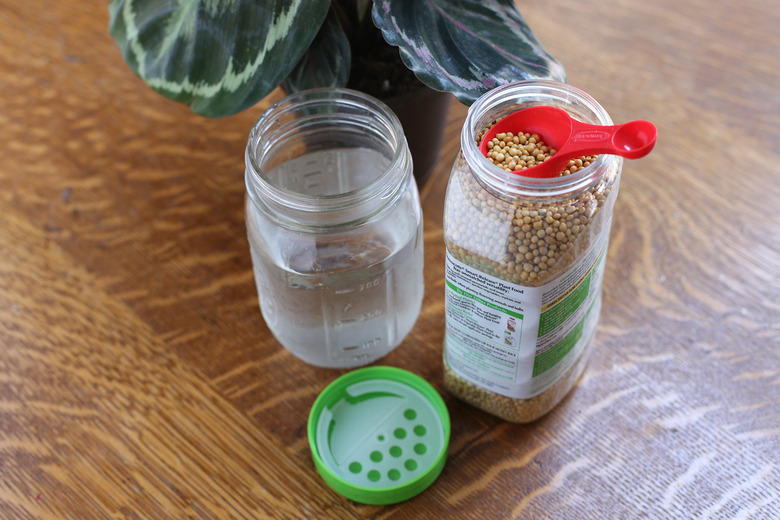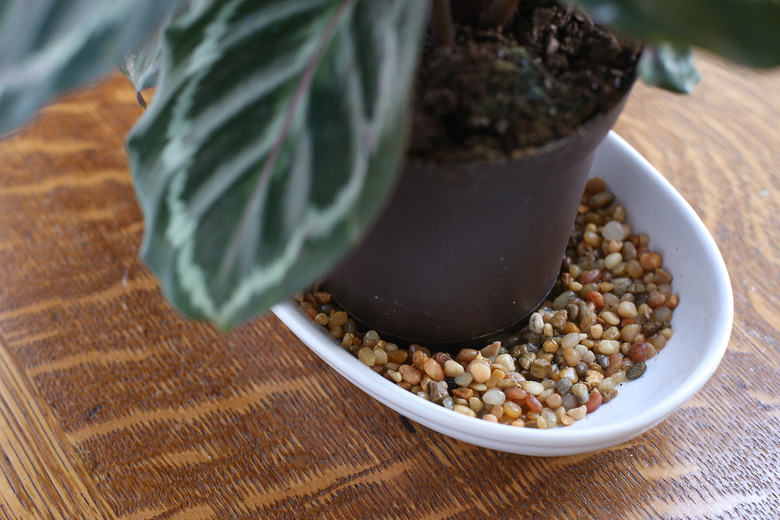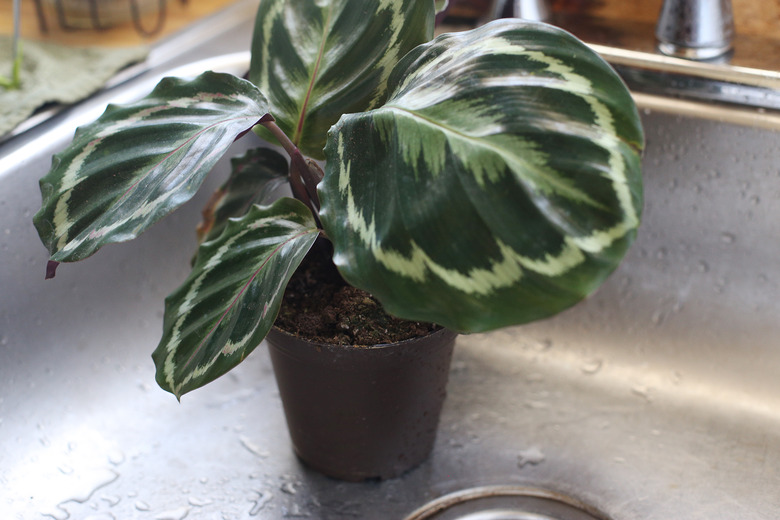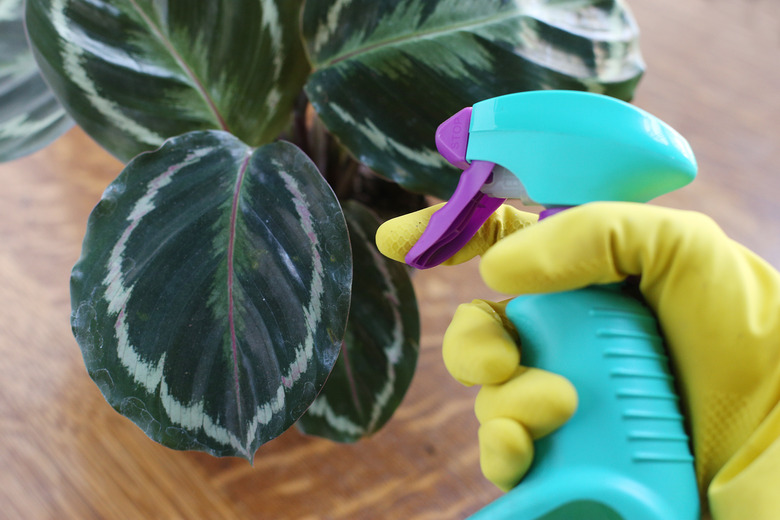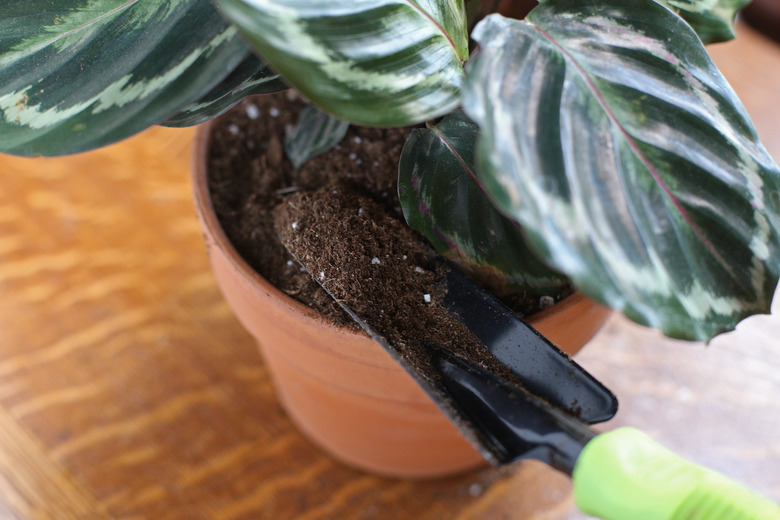How To Care For A Calathea Plant
Grown for their dramatic foliage, exotic calatheas (Calathea spp.) are among the splashiest of tropicals. Although star calathea "Lotus Pink" (Calathea loesneri "Lotus Pink") grows in U.S. Department of Agriculture plant hardiness zones 8 through 11, most calathea varieties resent dry air and temperatures lower than 55 degrees Fahrenheit. Grow your calathea as a houseplant, and move it outside in summer only if your temperatures remain between 65 and 90 F. Wherever you put it, expect to cater to its specific needs.
When and How to Fertilize
When and How to Fertilize
Plan to fertilize your calathea every three weeks between early spring and late summer. Replace a watering session with an application of 3/4 teaspoon — or the brand's specified amount– of 20-20-20 fertilizer granules dissolved in 1 gallon of lukewarm distilled or rainwater water. Fluoridated or hard water burns the foliage. When its growth slows in fall and winter, cut back to monthly feedings with 1 teaspoon of fertilizer in 1 gallon of distilled water or rainwater. Moisten the growing medium before fertilizing, and never use more fertilizer than the label recommends.
Water and Humidity
Water and Humidity
A calathea needs consistently moist growing medium and high humidity. Water with lukewarm distilled water or rainwater whenever the medium feels slightly dry, regardless of the season. Let it drain, wait a few minutes and repeat. Boost its humidity level by setting it on a shallow tray filled with wet pebbles and replacing the water as it evaporates.
Leaching Salts
Leaching Salts
Over time, accumulated fertilizer may brown your calathea's leaf tips and margins. To prevent the problem, leach the soil of salts every four to six months. If necessary, remove the whitish the whitish salt crust from the medium, but only to 1 inch deep. Then set your plant in the sink and pour distilled water or rainwater over it until it runs out of the drainage holes. Wait five minutes, then water thoroughly and drain again. Repeat until all traces of salt have dissolved from the medium.
Managing Pests
Managing Pests
While diseases rarely bother a calathea, tiny spider mites drain their fluids, curl, speckle and bronze their leaves and drape them in fine webs. Treat the pests with ready-to-use insecticidal soap at the first sign of trouble, spraying the plant until all its surfaces are wet. Make sure you coat the undersides of the leaves. Let the spray dry before returning the plant to its normal spot. Respray every one to two weeks, or at the manufacturer's suggested intervals, until the mites are gone. Always follow the label's instructions and wear protective clothing, waterproof gloves and safety goggles when spraying.
Repotting Calathea
Repotting Calathea
If your calathea needs daily watering but its medium takes several minutes to absorb the water you give it, it's time to repot. Choose a new container 2 inches larger than the existing one. Cover its drainage holes with paper towels and add enough fresh, moist potting medium to fill it one-third full. Slide the plant gently from its old pot, trim off up to one-third of its lower roots and carefully separate the remaining ones. Set it in the new pot with the roots' cut ends barely touching the medium and the bases of its stems just below the rim. Gradually add more medium, tamping lightly to remove air pockets as you work. When you're done, water to settle the medium so it's about 1/2 inch below the rim, let the plant drain and move it to its regular spot.
References
- ZipcodeZoo.com: Calathea Loesneri "Lotus Pink"
- Sunset Garden Book; Kathleen Norris Brenzel, Editor
- University of Connecticut College of Agricultural and Natural Resources: Fertilizing Houseplants
- Oregon State University Extension Service: Soluble Salts Damaging Houseplants
- University of Florida IFAS Extension: Calathea Makayona, Peacock Plant
- Missouri Botanical Garden: Spider Mites — Indoors
- University of Illinois Extension: Homeowner's Column — Repotting Houseplants
